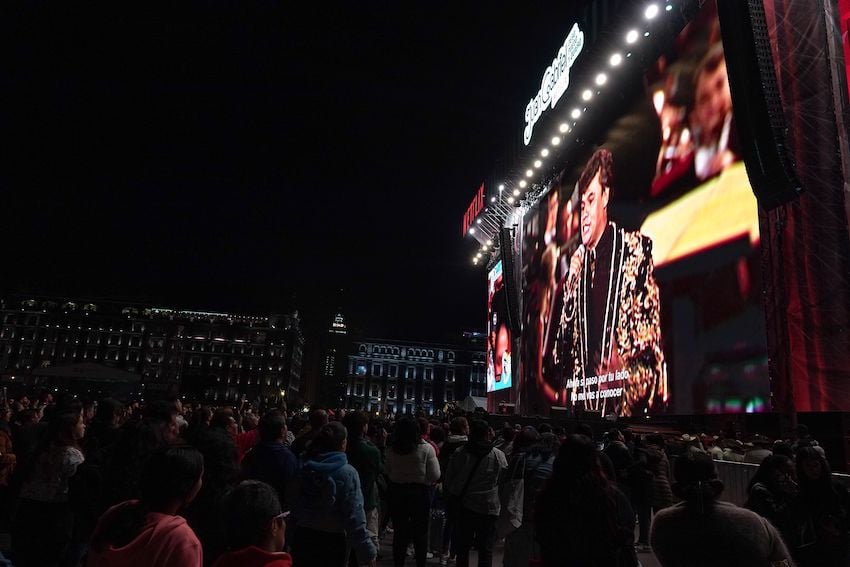A showing of Juan Gabriel’s iconic 1990 concert at Mexico’s Palace of Fine Arts drew approximately 170,000 people to Mexico City’s Zócalo on Saturday night, making for a special evening for fans of the “Divo de Juárez.”
Mexico City’s Culture Ministry, in collaboration with Netflix, organized the free event, erecting four giant screens and a powerful sound system in the capital’s main plaza.

Juan Gabriel (1950-2016) made history when he performed at Palacio de Bellas Artes in May 1990. Until then, few popular artists had been invited to perform at the distinguished venue, which typically hosted operas, symphonies and classical music performances.
With his unparalleled stage presence and symphonic arrangements, Juan Gabriel’s recital with the National Symphony Orchestra — often called one of the most memorable nights in the history of Mexican popular music — marked a turning point.
The show — which was preceded by petitions to cancel the “pop concert” at Mexico’s premier cultural venue — demonstrated that the music of the people deserves a place on the country’s most important stages, according to the newspaper Vanguardia.
The concert “not only transformed the way Mexican popular music was perceived, but also opened doors for other artists to cross those same cultural borders,” Vanguardia reported.
The Bellas Artes show was such a smash hit that three additional performances were added. Seven months later, a live recording from the concerts — Juan Gabriel en el Palacio de Bellas Artes — was released.
A year ago, 70,000 people flocked to the Zócalo to see a showing of Juan Gabriel’s 2013 concert “Mis 40 en Bellas Artes.”
Netflix promotes its Juanga documentary
The Saturday night showing also served as a promotional event for Netflix’s documentary “Juan Gabriel: I must, I can and I want to.”
View this post on Instagram
The four-episode series traces the life and career of Alberto Aguilera Valadez from his humble origins in Parácuaro, Michoacán, to his consecration as one of the most beloved figures in the world, known fondly as Juanga.
According to director María José Cuevas, the daughter of famed Mexican artist José Luis Cuevas, the film offers an intimate portrait of the artist, his life and his legacy, while also highlighting his fight against social stigmas and his influence as an icon of diversity and Mexican identity.
The documentary — which went online on Oct. 30 — has become a global hit for Netflix, reaching the top 10 in the non-English language series category.
Saturday’s screening included previously unseen footage from the artist’s personal archive, as well as restored shots from the original concert.
The event, which also features a photographic exhibition at the Bellas Artes Metro station, aims to introduce Juan Gabriel’s work to new generations and solidify his presence as a central figure in Mexican culture, said Laura Woldenberg, a member of the team behind the audiovisual project.
Early next year, the photo exhibit — which includes never-before-seen material from Juan Gabriel’s personal archive, photographs of his performances, and portraits captured throughout his artistic career — will move to twin displays along Reforma Avenue at the Angel of Independence Monument and the Diana the Huntress Fountain.
With reports from Billboard, The New York Times and Vanguardia
